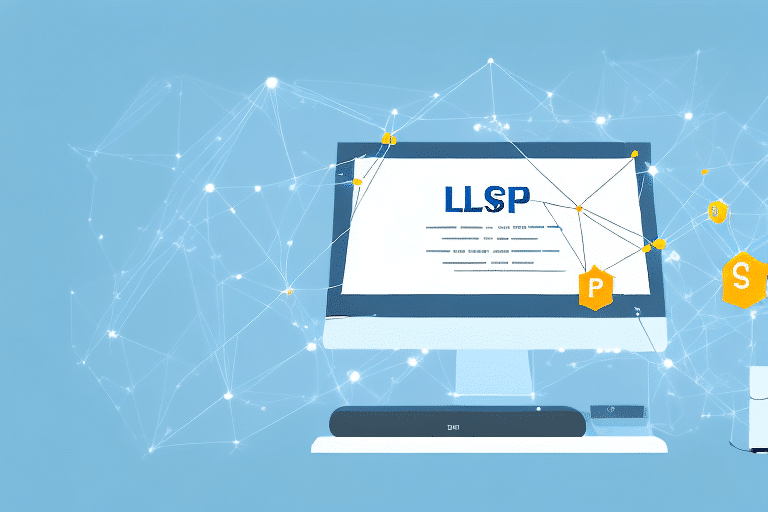How to Connect, Optimize, and Manage LSO for SAP Business One
SAP Business One is a robust ERP solution designed to enhance operational efficiency, streamline processes, and provide valuable insights into business operations. To maximize the potential of SAP Business One, integrating it with other solutions like LSO (Logistics Service Optimization) is crucial.
Understanding LSO and Its Importance for SAP Business One
What is LSO?
LSO is a comprehensive solution that enables businesses to optimize their logistics operations by delivering real-time information about shipments, carriers, and inventory. Integrating LSO with SAP Business One provides businesses with complete visibility into their logistics processes, facilitating informed decision-making to enhance efficiency, ensure timely deliveries, and minimize costs.
Key Features of LSO
- Real-time shipment tracking and carrier management
- Advanced analytics and reporting for logistics KPIs
- Customizable alerts for shipment delays and inventory shortages
- Integration capabilities with warehouse management and CRM systems
Benefits of Integrating LSO with SAP Business One
Enhanced Visibility and Control
Integration provides real-time visibility into inventory levels and shipments, allowing businesses to optimize logistics processes and ensure on-time deliveries.
Improved Decision-Making
Access to real-time data and analytics empowers businesses to make informed decisions that enhance their logistics operations.
Cost Reduction
Optimizing logistics operations leads to reduced operational costs, improved margins, and increased profitability.
Streamlined Communication
Integration facilitates seamless information sharing between logistics, sales, and finance departments, enhancing collaboration and reducing errors.
Step-by-Step Guide to Connecting LSO with SAP Business One
- Assess Business Requirements: Identify the LSO solution that best aligns with your business needs.
- Installation and Configuration: Install and configure the chosen LSO solution following the manufacturer’s guidelines.
- Integration Setup: Map relevant fields and configure workflows to establish the integration between LSO and SAP Business One.
- Testing: Conduct thorough testing to ensure the integration functions correctly.
- User Training: Train your team on utilizing the integrated solution effectively.
Engaging both IT teams and business stakeholders during the configuration process ensures that the integration aligns with organizational goals and processes. Regular monitoring and maintenance are essential to keep the integration functional and responsive to evolving business needs.
Overcoming Challenges in Integrating LSO with SAP Business One
Data Compatibility Issues
Ensuring data compatibility between LSO and SAP Business One is critical. Utilize data mapping tools and conduct regular data audits to mitigate compatibility issues.
Complex Integration Processes
The complexity of integration can be addressed by involving experienced IT professionals and using comprehensive integration tools.
User Adoption
Enhancing user adoption through training and demonstrating the benefits of the integrated system can reduce resistance and improve utilization rates.
Technical Challenges
Address technical issues such as system incompatibilities or data corruption by performing regular system checks and employing robust backup solutions.
Cost Management
Manage the costs associated with deploying and maintaining the integrated solution by budgeting appropriately and exploring scalable integration options.
Best Practices for Optimizing LSO Performance in SAP Business One
- Infrastructure Maintenance: Ensure that your hardware and software infrastructure are up-to-date and compatible with both LSO and SAP Business One.
- Regular Updates: Keep your LSO solution updated to leverage the latest features and security patches.
- Comprehensive Training: Provide ongoing training to users to maximize the effective use of LSO and SAP Business One together.
- Performance Monitoring: Track key performance metrics such as delivery times, inventory turnover, and order accuracy to identify and address areas for improvement.
- Data Management: Regularly clean and organize data to enhance system performance and reduce errors.
Maintaining clean and organized data involves removing outdated or duplicate information and archiving historical data that is no longer needed for daily operations. This practice not only improves system performance but also minimizes the risk of data corruption.
Managing LSO Data and Processes in SAP Business One
- System Configuration: Configure SAP Business One to receive and process data from LSO effectively.
- Data Field Alignment: Define and align data fields in SAP Business One to match those in LSO for seamless data transfer.
- Workflow Automation: Set up workflows to automate the transfer and processing of data between LSO and SAP Business One.
- Data Flow Monitoring: Continuously monitor data flows to ensure accuracy and functionality.
Effective management of LSO data and processes requires a deep understanding of both systems. Assigning dedicated personnel to oversee this integration ensures accurate data transfer and processing. Regular maintenance and updates are vital to maintaining a seamless integration between LSO and SAP Business One.
Enhancing Supply Chain Management with LSO in SAP Business One
LSO is integral to supply chain management for SAP Business One users. By providing real-time insights into logistics operations, LSO enables businesses to:
- Optimize logistics processes
- Reduce operational costs
- Improve on-time delivery rates
- Enhance customer satisfaction
Implementing LSO within SAP Business One supports a more responsive and efficient supply chain, driving overall business performance.
Integrating LSO with Third-Party Solutions to Maximize SAP Business One
Enhancing SAP Business One with third-party integrations can provide additional functionalities and improve overall business operations. For example:
- Transportation Management Systems (TMS): Integrating LSO with a TMS allows businesses to optimize carrier selection and routing decisions.
- Warehouse Management Systems (WMS): Integration with a WMS enhances inventory management and warehouse operations. For more information on WMS benefits, refer to this resource.
- Customer Relationship Management (CRM) Systems: Linking LSO with a CRM system streamlines sales and customer service processes by centralizing customer data and interactions.
- E-Commerce Platforms: Integrating LSO with an e-commerce platform enables businesses to offer real-time shipping rates and delivery options, enhancing the customer experience. Learn more about choosing the right e-commerce platform here.
Troubleshooting Common Issues with LSO in SAP Business One
When working with LSO in SAP Business One, businesses may encounter issues such as data corruption, system incompatibility, or user errors. To effectively troubleshoot these problems, consider the following steps:
- Review Logs and Error Messages: Analyze logs and error messages to identify the root cause of the issue.
- Seek Support: Consult with the support teams of both LSO and SAP Business One for expert assistance.
- System Checks: Conduct thorough system checks to ensure all components are functioning correctly.
- User Training: Provide training to users on best practices to minimize errors and improve system usage.
Implementing automated monitoring and alert systems can also help in quickly identifying and resolving issues, ensuring that LSO operations remain smooth and efficient.
Regularly updating both LSO and SAP Business One software is essential to access the latest features and security enhancements. This proactive approach helps maintain the integrity and performance of the integrated systems.
Conclusion
Successfully connecting, optimizing, and managing LSO within SAP Business One can significantly improve logistics operations, reduce costs, and enhance customer satisfaction. By following best practices, addressing common challenges, and leveraging third-party integrations, businesses can fully harness the capabilities of both LSO and SAP Business One to drive operational excellence.






















